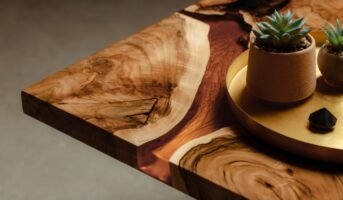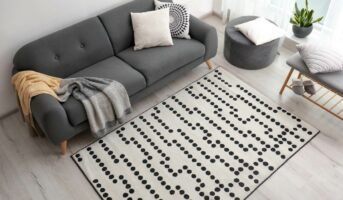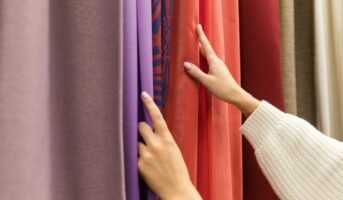Interior design is all about creating a space that is not only functional and comfortable, but also aesthetically pleasing. One aspect of interior design that can significantly enhance the beauty and value of a home is the use of indoor plants. With careful selection and arrangement, indoor plants can make a home look more luxurious and expensive. In this article, we will explore five ways in which designers use indoor plant arrangements to achieve this effect.
See also: Indoor plants for summers
Focal point creation
Designers often use large, statement-making indoor plants to create a focal point in a room. This can be achieved by placing a large plant like a fiddle leaf fig or Monstera deliciosa in a prominent location, such as near a window or in a corner. The lush greenery of the plant instantly draws the eye and adds a touch of luxury to the space.
Grouping plants
Another way designers use indoor plants to enhance a room’s aesthetic is by grouping different plants together. This not only creates visual interest but also gives the room a more curated, high-end look. When grouping plants, designers often play with different heights, sizes, and textures to create a pleasing arrangement.
Using unique planters
The planters that house the plants can also contribute to making a home look more expensive. Designers often opt for unique, high-quality planters in materials like ceramic, metal, or wood. These not only provide a stylish home for the plants but also serve as decorative pieces in their own right.
Strategic placement
Strategic placement of indoor plants is another technique used by designers. This can mean placing a plant in an unexpected location, like the bathroom, or using plants to highlight architectural features, such as a fireplace or a beautiful window.
Incorporating variety
Finally, incorporating a variety of plant species into a home can add a sense of luxury. This variety can create a feeling of abundance and richness, making the home feel more expensive. Designers often choose plants with different shapes, colours, and textures to achieve this effect.
Indoor plants can be a powerful tool in interior design, capable of transforming a space and making it look more expensive. By creating focal points, grouping plants, using unique planters, placing plants strategically, and incorporating a variety of species, designers can use plants to enhance the beauty and value of a home. So, the next time you’re looking to elevate your home’s interior, consider the power of indoor plants.
FAQs
What are some good indoor plants to use for a luxurious look?
Plants like fiddle leaf figs, monsteras, and palm plants can give a luxurious look to a home.
Where can I find unique planters?
Unique planters can be found in home decor stores, garden centres, and online marketplaces like Etsy.
Can all plants be grouped together?
Not all plants can be grouped together as some may have different light and water requirements. It's best to group plants with similar needs together.
How can I use plants to highlight architectural features?
You can place tall plants near features you want to highlight, or use trailing plants to draw attention to high shelves or mantels.
What factors should I keep in mind when selecting plants for my living space?
Consider factors like the amount of light your home gets, the humidity level, and how much time you can devote to plant care.
Do I need a lot of plants to make my home look expensive?
Not necessarily. Even a few well-chosen and well-placed plants can elevate a space.
Can indoor plants improve the air quality in my home?
Yes, some indoor plants are known to purify the air by removing toxins.
| Got any questions or point of view on our article? We would love to hear from you. Write to our Editor-in-Chief Jhumur Ghosh at jhumur.ghosh1@housing.com |

Upasana Mandhata, currently in her final year of Law, is pursuing a BA LLB Degree at VIT University Chennai. Her interest in content creation dates back to her school and college years when she discovered a writing passion. Drawing from personal experiences, her writing style has been shaped by her journey and encounters. She enjoys experimenting with new recipes, painting, or swimming while clocking out of work time.












